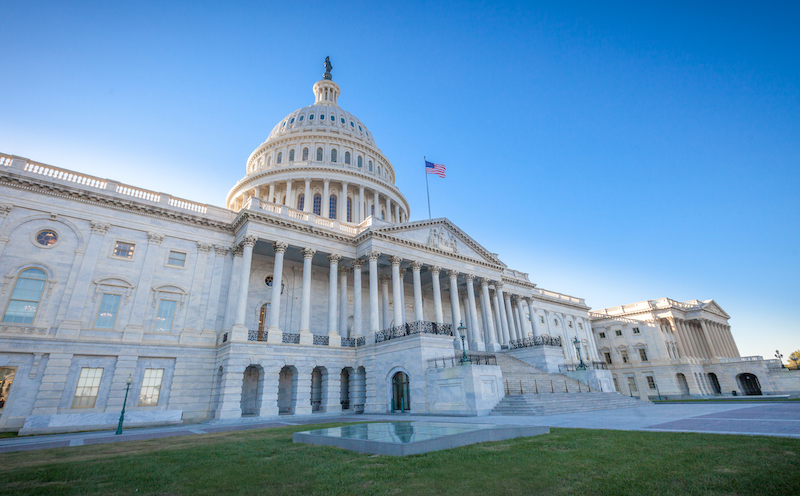
Congress should modify the Congressional Review Act to enhance clarity and improve oversight of agencies.
Today, a great deal of federal governance occurs via agency rulemaking. In this modern regulatory world, the U.S. Congress faces an important question: How can it retain control over the rules that govern daily life?
For much of the 20th century, Congress had an answer. It regularly enacted statutes that empowered one or both chambers of Congress, acting without presidential involvement, to reject individual agency rules. In the 1983 case of INS v. Chadha, however, the U.S. Supreme Court declared this “legislative veto” approach unconstitutional. As a result, Congress needed to develop a new legislative tool that would not run afoul of the Court’s requirements outlined in Chadha but would still allow for efficient review of agency rules.
Congress eventually confronted this challenge by enacting the Congressional Review Act (CRA), a statute that celebrated its 25th anniversary last year. The CRA creates a streamlined legislative procedure for Congress to review and disapprove agency rules. Most notably, although the CRA requires passage by both chambers and signature by the President, it allows Congress to bypass the Senate filibuster when reviewing agency rules—provided that Congress acts within a fixed window of time. In this way, the CRA provides a relatively efficient legislative mechanism for Congress to prevent disfavored agency rules from going into effect.
Although well-intentioned, there has long been widespread agreement that the CRA suffers from significant design flaws. On the 10th anniversary of its enactment, for example, a congressional examination found ample evidence that the law has not worked well enough to achieve the objectives envisioned by its sponsors. Nonetheless, the CRA has undergone no statutory improvements since its enactment. As a result, it operates in ways that regularly confuse and frustrate those both inside and outside of Congress.
In recent years, the importance of addressing design flaws in the CRA has increased significantly. On its 10th anniversary, the CRA was still relatively obscure. It had been successfully invoked only once, and many observers predicted that the conditions needed for its use would not repeat.
These predictions have proven false. The statute has been successfully used 19 times since 2016 by presidents of both parties. This sudden rise in the CRA’s use has made it an active and important legal component of our administrative state—a situation that would have been unexpected on the CRA’s 10th anniversary.
To address concerns about the effectiveness of this increasingly consequential law, the Administrative Conference of the United States (ACUS) tasked me with developing a report to assess whether targeted reforms might help to ensure that the CRA functions properly to achieve its goals.
My report examined the wisdom and feasibility of three specific reforms that, in recent years, have been identified as potential good governance solutions with promise to strengthen the CRA. These potential reforms look to achieve the following:
- Shift the CRA’s requirement for agencies to submit materials to Congress toward an electronic submission process;
- Help ascertain key dates and time periods for CRA review of agency rules; and
- Formalize a congressional procedure to initiate review of rules that agencies conclude are not subject to review by the CRA.
To examine these three reforms, I conducted interviews with governmental and private actors about the modern-day operation of the CRA. Because many aspects of the CRA are not specified in the statute, these interviews were essential to understand implementation practices developed over time. I supplemented the interviews by researching the CRA’s origins as well as its historical implementation. Based on this research, the report provided a detailed window into the foundational goals and real-world operation of the CRA. The report used its findings to examine the benefits, drawbacks, and feasibility of the three proposed reforms.
In that report, I concluded that Congress should adopt each of the three proposed reforms. Moreover, I outlined ancillary policies that Congress could include to maximize reform effectiveness and prevent unintended consequences. Modifying key dates and time periods under the CRA, for example, could simplify the law without undermining its core objectives.
In addition, my report recommended that Congress formalize a procedure for reviewing rules that agencies conclude are not covered by the CRA. But clear deadlines should accompany the various steps of that procedure—in turn eliminating uncertainty for regulated entities and enhancing statutory clarity sought by the original architects of the law.
Based in part on the report and its recommendations, ACUS adopted its own recommendation for CRA reforms. ACUS similarly urged Congress to adopt each of the three studied reforms and to enact important ancillary policies.
Congress should seriously consider this ACUS recommendation. As the CRA enters its next quarter century, it will likely continue to serve a prominent role in the administrative state and serve as a congressional mechanism for meaningful oversight of agency rulemaking. Ideally, it will operate in a way that captures the goals of the law’s architects—to empower congressional oversight, not to unduly burden Congress or agencies, and to bring clarity to regulated actors and other parties.
To accomplish these goals, Congress must update and modify some details of the CRA established a quarter century ago. ACUS’s recommendation provides a roadmap to accomplish a congressional review process better suited to the evolving U.S. administrative state.
The views expressed in this essay are those of the author and do not necessarily represent the views of ACUS or the federal government.
This essay is part of a six-part series on the Administrative Conference of the United States, entitled Improving Transparency and Administrative Accountability.




